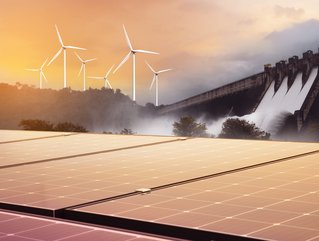In the fast-paced world of today, the demand for energy is insatiable. As industries expand and technology advances, the reliance on conventional energy sources remains steadfast. This comprehensive exploration delves into the intricacies of conventional energy, shedding light on the powerhouses that fuel our modern lifestyles.
Read more about Solar Energy
Contents
What Sets Conventional Energy Apart?
Defining Conventional Energy Sources
Conventional energy refers to the time-tested methods of harnessing power that have fueled societies for centuries. These energy sources include fossil fuels like coal, natural gas, and oil, as well as nuclear power. Unlike renewable energy, which relies on naturally replenishing resources, conventional energy draws from Earth’s finite reservoirs.
Reliability and Consistency
One undeniable advantage of conventional energy lies in its reliability. Fossil fuels and nuclear power plants provide a constant and consistent source of energy, ensuring stability in the face of variable renewable sources like solar and wind.

The Backbone of Energy Production: Fossil Fuels
Unveiling the Power of Coal
A Historical Perspective
Coal, a stalwart in conventional energy sources, has a rich historical significance. From powering steam engines during the industrial revolution to its continued role in electricity generation, coal remains a driving force. Despite concerns about environmental impact, advancements in clean coal technologies aim to mitigate these issues.
Natural Gas: A Versatile Player
Adaptable Applications
Natural gas has emerged as a versatile player in the energy landscape. Its applications range from electricity generation to heating and transportation. The shift towards natural gas is driven by its lower carbon footprint compared to coal and oil, making it a transitional fuel in the journey towards sustainable energy.
Liquid Gold: The Power of Oil
Beyond Fueling Transportation
While oil is synonymous with transportation fuels, its applications extend far beyond the gas pump. Petrochemicals derived from oil play a pivotal role in manufacturing, producing everything from plastics to pharmaceuticals.
Nucleus of Power: Nuclear Energy
Unraveling the Atom
Harnessing Nuclear Reactions
Nuclear energy sources harnesses the immense power locked within atomic nuclei. Through controlled nuclear reactions, power plants generate heat, subsequently converted into electricity. The absence of greenhouse gas emissions positions nuclear energy as a low-carbon alternative, albeit with its own set of challenges, including waste management and safety concerns.
Challenges and Controversies
Environmental Impacts of Conventional Energy
Undeniably, the burning of fossil fuels contributes significantly to carbon emissions, intensifying climate change. As the global community grapples with the urgency of environmental sustainability, the quest for cleaner, greener alternatives intensifies.
Nuclear Energy Dilemmas
Balancing Benefits and Risks
While nuclear energy sources offers a low-carbon solution, concerns about nuclear accidents, radioactive waste disposal, and the potential for weaponization loom large. Striking a balance between the benefits and risks remains a complex challenge.
The Road Ahead: Innovation and Transition
Emerging Technologies
Towards Sustainable Solutions
The future of energy lies in innovation and sustainability. From advancements in renewable energy technologies to breakthroughs in energy storage, the landscape is evolving. Balancing the need for power with environmental responsibility requires a strategic transition towards cleaner, more efficient energy sources.
Conclusion
The journey into the realm of conventional energy unveils a complex tapestry of history, challenges, and innovations. While these energy sources continue to be the backbone of our energy infrastructure, the imperative to transition towards sustainable alternatives is undeniable. As industries and individuals alike embrace the shift, the synergy between conventional and renewable energy will pave the way for a resilient and environmentally conscious future.



